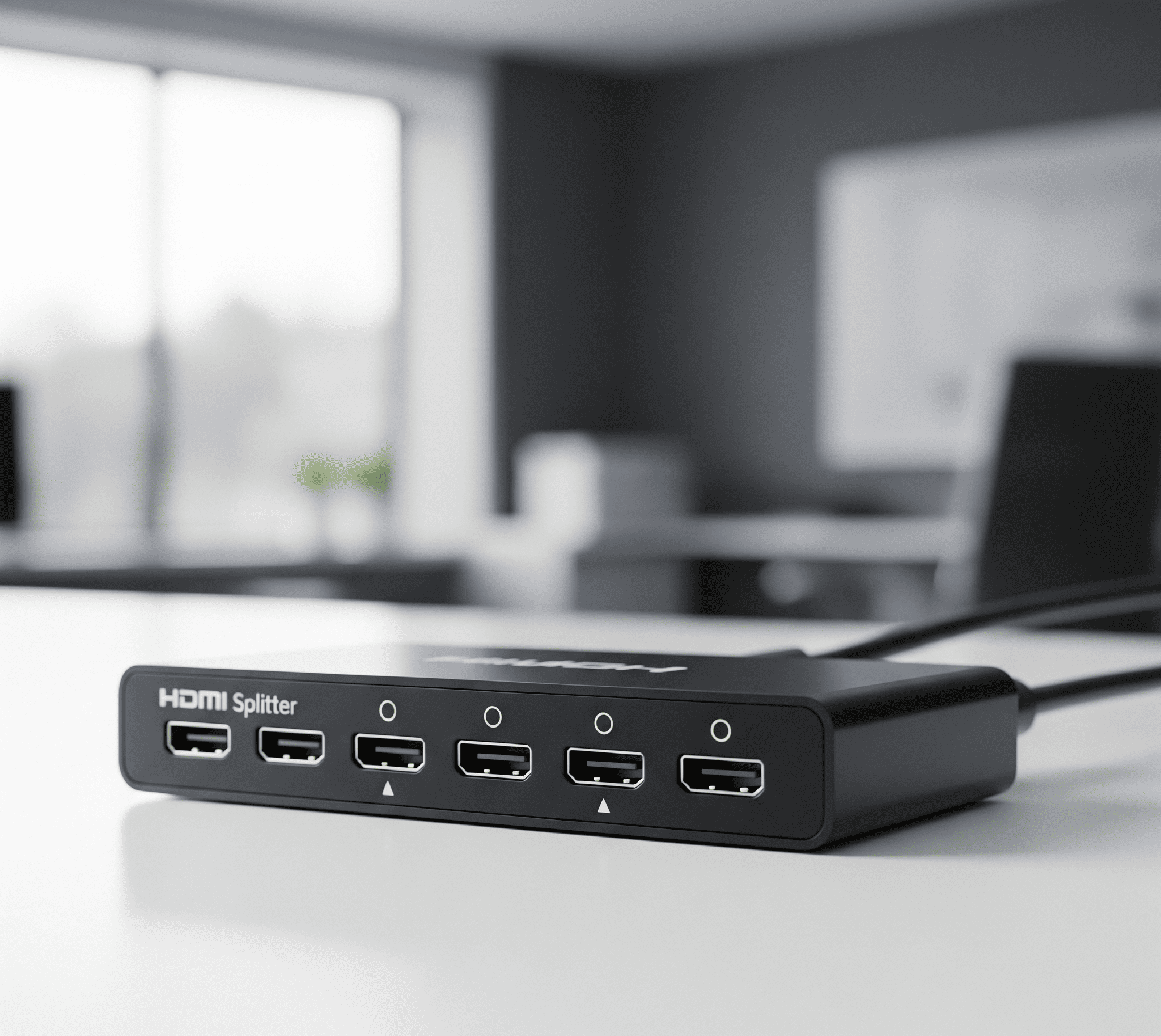Kingsgrove Branch:
HDMI Splitter

HDMI splitter sets the stage for a captivating journey into the world of multi-screen entertainment. Imagine seamlessly connecting your favorite devices to multiple displays, whether it's a home theater setup or a dynamic presentation. This guide delves into the intricacies of HDMI splitters, exploring their diverse types, features, and applications
Understanding the nuances of HDMI splitter is crucial for maximizing your viewing and presentation experience. From passive models to active ones, each type offers a unique balance of features, performance, and cost. Choosing the right splitter depends on your specific needs, budget, and desired output quality. This exploration will guide you through the selection process and help you make an informed decision
HDMI Splitters: A Comprehensive Guide
HDMI splitters are a valuable tool for expanding your viewing options. They allow you to send a single HDMI signal to multiple displays, making it easy to share content or enjoy a larger viewing experience. This guide covers everything from the basics to advanced applications and troubleshooting
Introduction to HDMI Splitters
HDMI splitters are devices that duplicate a single HDMI signal to multiple displays. They act as a crucial link in expanding your entertainment options. Fundamentally, they take one source (like a Blu-ray player) and distribute the same signal to multiple displays (such as TVs or monitors). There are different types of HDMI splitters, each with its own characteristics
- Passive splitters are the most basic type. They simply split the signal, relying on the inherent strength of the signal. They're typically less expensive but may suffer some signal degradation, especially over longer distances
- Active splitters, on the other hand, boost the signal before distributing it. This results in a clearer picture and allows the signal to travel farther. They're more expensive but offer a superior experience
HDMI splitters are commonly used in home theaters, gaming setups, presentations, and even in commercial settings
| Feature | Passive | Active |
| Cost | Low | High |
| Signal Quality | Lower | Higher |
| Signal Distance | Short | Long |
| Power Requirements | No | Yes |
Features and Specifications
Choosing the right HDMI splitter involves considering key features and specifications. Resolution, bandwidth, and supported HDMI versions are crucial factors. The technical aspect of splitting HDMI signals involves careful design to ensure signal integrity
- Resolution refers to the sharpness of the image. Higher resolutions, like 4K and 8K, require more bandwidth
- Bandwidth dictates how much data the splitter can handle. Higher bandwidth is essential for high-resolution video and audio
- HDMI Versions ensure compatibility with the source and displays
| Model | Resolution | Bandwidth | HDMI Version |
| Model A | 4K | 18Gbps | 2.0 |
| Model B | 8K | 36Gbps | 2.1 |
Selection Criteria
Selecting the appropriate HDMI splitter depends on your specific needs. Understanding signal quality and stability is important
- Cable Quality is crucial for maintaining signal integrity. Poor cables can significantly degrade the quality of your display
- Brand Reputation also plays a role. Consider the track record of different brands for reliability and support
Practical Applications
HDMI splitters enhance multi-screen viewing in home entertainment setups. They are also useful for presentations and home theater setups
| Setup | Source Device | Display Devices | Splitter Type |
| Home Cinema | Blu-ray Player | 2 TVs | Active |
| Gaming | Console | 2 Monitors | Active |
Product Information from schnap.com.au
Schnap.com.au offers a variety of HDMI splitters with different features and specifications. The pricing varies depending on the features and model
| Product | Features | Price |
| Schnap HDMI Splitter A | 4K, Active | $XX |
| Schnap HDMI Splitter B | 8K, Passive | $YY |
Troubleshooting and Maintenance, Hdmi splitter
Common issues with HDMI splitters include signal loss or interference. Proper maintenance can extend their lifespan
Safety Precautions
Always handle HDMI splitters with care. Correct installation and usage are crucial for preventing potential hazards. See HDMI Arc
Conclusive Thoughts
In conclusion, HDMI splitter are indispensable tools for expanding your entertainment and presentation possibilities. By carefully considering factors like signal quality, distance, and cost, you can select the ideal splitter to perfectly suit your setup. This guide has hopefully provided a comprehensive overview, empowering you to confidently navigate the world of HDMI splitting and achieve optimal results
FAQ Insights
What are the common problems with HDMI splitters?
Signal degradation, interference, and incompatibility with certain devices are common issues. Poor cable quality can also contribute to problems
How do I troubleshoot a faulty HDMI splitter?
First, check the connections. Ensure all cables are securely plugged in. If the issue persists, try a different HDMI cable. If still problematic, consider trying a different HDMI splitter
What's the difference between passive and active HDMI splitters?
Passive splitters are less expensive, but they often suffer from signal degradation over longer distances. Active splitters are more expensive but maintain a stronger signal over longer distances, providing better picture quality
What are the safety precautions when using HDMI splitters?
Always ensure the splitter is properly installed. Avoid bending or twisting the HDMI cables, as this can damage the internal components. Ensure proper ventilation to prevent overheating. Refer to the manufacturer's instructions for specific safety guidelines
Recent posts

Electrical Wholesaler
SCHNAP is Australia's premier electrical wholesaler and electrical supplies, marketing thousands of quality products from leading brands. Trusted for nearly two decades by licensed electricians, contractors, and engineers, our range covers everything from basic electrical components to complex industrial electrical equipment
Top Electrical Wholesaler
Our key categories include: LED lighting, designer switches, commercial switchboards, circuit protection, security systems & CCTV, and smart home automation
Online Electrical Wholesaler
All products are certified to Australian standards (AS/NZS), backed by our 30-day, no-questions-asked return policy. Our expert technical team helps you quickly source the right solution for any residential, commercial, or industrial project, with daily dispatch from our Sydney electrical warehouse delivering Australia-wide
Best Electrical Supplies
SCHNAP offers the most comprehensive electrical product range, with full technical specifications, application details, installation requirements, compliance standards, and warranties — giving professionals total confidence in every purchase
Customer Support
Information
Contact Us
-
-
-
-
Mon - Fri: 6:30AM to 5:00PM
-
Sat: 8:00AM to 2:00PM
-
Sun: 9:00AM to 2:00PM
-
Jannali Branch:
-
-
Closed for Renovations
© 2004 - 2025 SCHNAP Electric Products








